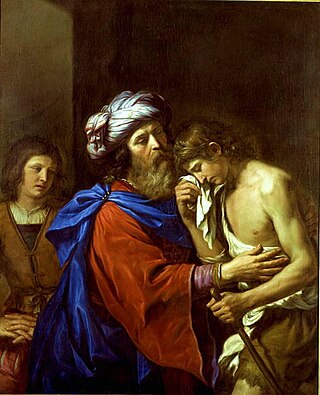
Sin Killer is a historical novel by American writer Larry McMurtry. It is the first, both in chronological and publishing order, of The Berrybender Narratives . It was published in 2002.

Sin Killer is a historical novel by American writer Larry McMurtry. It is the first, both in chronological and publishing order, of The Berrybender Narratives . It was published in 2002.
Set in 1832, the book follows the adventures of a clan of eccentric British aristocrats and their retainers as they begin a hunting expedition up the Missouri River.
The title refers to the nickname given to frontiersman Jim Snow, a Berrybender ally who violently hates sin of all kinds.

In geography, latitude is a coordinate that specifies the north–south position of a point on the surface of the Earth or another celestial body. Latitude is given as an angle that ranges from −90° at the south pole to 90° at the north pole, with 0° at the Equator. Lines of constant latitude, or parallels, run east–west as circles parallel to the equator. Latitude and longitude are used together as a coordinate pair to specify a location on the surface of the Earth.

Original sin is the Christian doctrine that holds that humans, through the act of birth, inherit a tainted nature with a proclivity to sinful conduct in need of regeneration. The biblical basis for the belief is generally found in Genesis 3, in a line in Psalm 51:5, and in Paul's Epistle to the Romans, 5:12-21.

In a religious context, sin is a transgression against divine law or a law of the deities. Each culture has its own interpretation of what it means to commit a sin. While sins are generally considered actions, any thought, word, or act considered immoral, selfish, shameful, harmful, or alienating might be termed "sinful".

In mathematics, a spherical coordinate system is a coordinate system for three-dimensional space where the position of a given point in space is specified by three real numbers: the radial distancer along the radial line connecting the point to the fixed point of origin; the polar angleθ between the radial line and a polar axis; and the azimuthal angleφ as the angle of rotation of the radial line around the polar axis. (See graphic re the "physics convention".) Once the radius is fixed, the three coordinates (r, θ, φ), known as a 3-tuple, provide a coordinate system on a sphere, typically called the spherical polar coordinates.

In mathematics, the trigonometric functions are real functions which relate an angle of a right-angled triangle to ratios of two side lengths. They are widely used in all sciences that are related to geometry, such as navigation, solid mechanics, celestial mechanics, geodesy, and many others. They are among the simplest periodic functions, and as such are also widely used for studying periodic phenomena through Fourier analysis.

A triangle is a polygon with three corners and three sides, one of the basic shapes in geometry. The corners, also called vertices, are zero-dimensional points while the sides connecting them, also called edges, are one-dimensional line segments. A triangle has three internal angles, each one bounded by a pair of adjacent edges; the sum of angles of a triangle always equals a straight angle. The triangle is a plane figure and its interior is a planar region. Sometimes an arbitrary edge is chosen to be the base, in which case the opposite vertex is called the apex; the shortest segment between base and apex is the height. The area of a triangle equals one-half the product of height and base length.

The seven deadlysins, also known as the capitalvices or cardinal sins, function as a grouping and classification of major vices within the teachings in Christianity and Islam. According to the standard list, the seven deadly sins in Christianity are pride, greed, wrath, envy, lust, gluttony and sloth.

In astronomy, coordinate systems are used for specifying positions of celestial objects relative to a given reference frame, based on physical reference points available to a situated observer. Coordinate systems in astronomy can specify an object's relative position in three-dimensional space or plot merely by its direction on a celestial sphere, if the object's distance is unknown or trivial.
In vector calculus, the Jacobian matrix of a vector-valued function of several variables is the matrix of all its first-order partial derivatives. When this matrix is square, that is, when the function takes the same number of variables as input as the number of vector components of its output, its determinant is referred to as the Jacobian determinant. Both the matrix and the determinant are often referred to simply as the Jacobian in literature.
In linear algebra, a rotation matrix is a transformation matrix that is used to perform a rotation in Euclidean space. For example, using the convention below, the matrix

Sin City is a 2005 American neo-noir crime anthology film directed by Robert Rodriguez and Frank Miller based on Miller's comic book series of the same name. The film stars an ensemble cast led by Jessica Alba, Benicio del Toro, Brittany Murphy, Clive Owen, Mickey Rourke, Bruce Willis, and Elijah Wood, and featuring Alexis Bledel, Powers Boothe, Michael Clarke Duncan, Rosario Dawson, Devon Aoki, Carla Gugino, Rutger Hauer, Jaime King, Michael Madsen, Nick Stahl, and Makenzie Vega among others.
The Berrybender Narratives is a series of novels written by Larry McMurtry. It tells the story of an ill-fated hunting expedition lasting several years and covering much of the early American West. As with much of McMurtry's Western fiction, it weaves a tale of bloody adventure with a sort of ghastly dark humor.

By Sorrow's River is a 2003 novel by Larry McMurtry. It is the third, both in chronological and publishing order, of The Berrybender Narratives. Set in the year 1833, it recounts the Berrybenders' journey south through the Great Plains to Bent's Fort on the Arkansas River.

Folly and Glory (2004) is a novel by Larry McMurtry. It is the fourth and last, both in chronological and publishing order, of The Berrybender Narratives. Set in the years 1835 and 1836, it completes the Berrybenders' North American adventure by sending them from Santa Fe to the disease-ridden and war-torn wilderness of New Mexico and Texas. Many characters are caught up in a whirlwind of death, madness, and bitter remorse.

In mathematics, sine and cosine are trigonometric functions of an angle. The sine and cosine of an acute angle are defined in the context of a right triangle: for the specified angle, its sine is the ratio of the length of the side that is opposite that angle to the length of the longest side of the triangle, and the cosine is the ratio of the length of the adjacent leg to that of the hypotenuse. For an angle , the sine and cosine functions are denoted as and .
The Sacrament of Penance is one of the seven sacraments of the Catholic Church, in which the faithful are absolved from sins committed after baptism and reconciled with the Christian community. During reconciliation, mortal sins must be confessed and venial sins may be confessed for devotional reasons. According to the dogma and unchanging practice of the church, only those ordained as priests may grant absolution.

In Christianity, sin is an immoral act and transgression of divine law. The doctrine of sin is central to the Christian faith, since its basic message is about redemption in Christ.

The Seven Deadly Sins is a Japanese fantasy manga series written and illustrated by Nakaba Suzuki. It was serialized in Kodansha's Weekly Shōnen Magazine from October 2012 to March 2020, with the chapters collected into 41 tankōbon volumes. Featuring a setting similar to the European Middle Ages, the story follows a titular group of knights representing the seven deadly sins. The manga has been licensed by Kodansha USA for English publication in North America, while the chapters were released digitally by Crunchyroll in over 170 countries as they were published in Japan.

Steven Wolfe, better known as Johnny Sins, is an American pornographic actor, director, and YouTuber. He is consistently among the most popular male talent pornography searches and is known for his shaved head, muscular physique, and blue eyes. His accolades include three AVN Awards for Male Performer of the Year He has been the subject of memes, which center on the large variety of occupations his pornographic characters have worked.